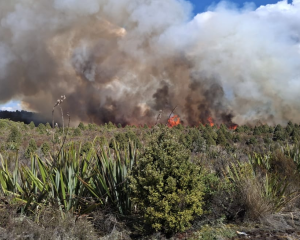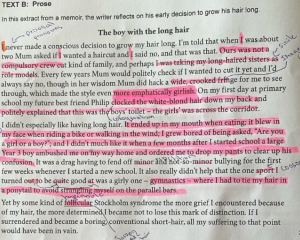
Researchers from AUT University and the University of Otago sliced open the behemoth in a giant bathtub today. They discovered the animal was a girl -- with big eyes and a big mouth.
It's the first new colossal squid analysed at the museum in six years.
Scientists today discovered the eyes were 35cm across, at least 8cm bigger than the last one. AUT's Dr Kat Bolstad showed off the 350kg squid's light organs, one of which was 4.5cm long.
The black, sharp squid beak proved hardest to extricate. The animal's enormity meant some of its organs took hours longer to thaw than the surface.
Eventually Dr Bolstad showed off the animal's rasped tongue, parrot-like beak and tiny oesophagus, no wider than a human's index finger. The alien-looking creature's oesophagus passes through its donut-shaped brain before the digestive system continues breaking down squid food, which probably included Patagonian toothfish.
The animal thawed largely to plan and Dr Bolstad was able to begin the examination shortly before midday.
Researchers took samples of goo from the animal to see what bacteria might keep the squid company. They also hope to see whether human impact on ocean chemistry is affecting the colossal squid.
The animal was a deep red colour but in its deep sea habitat appeared black to most animals, Dr Bolstad said.
Keen to preserve the animal for future display, Dr Bolstad and her team took only small samples of the monster.
It will shortly be placed in a new chemical solution to prevent decomposition.
The animal's tentacles were not intact but its legs all measure slightly over 100cm. Dr Bolstad said its tentacles alone would have been about 2.5m long -- 50cm more than the height of All Black lock Brodie Retallick.
The animal's dozens of intact suckers and hooks were also visible for the first time. Protective coverings called trabeculae surround the hooks.
The squid was caught on Sanford fishing boat San Aspiring's line in Antarctic waters last summer. San Aspiring brought the squid back to New Zealand, where it was kept in a freezer.
By John Weekes of APNZ












